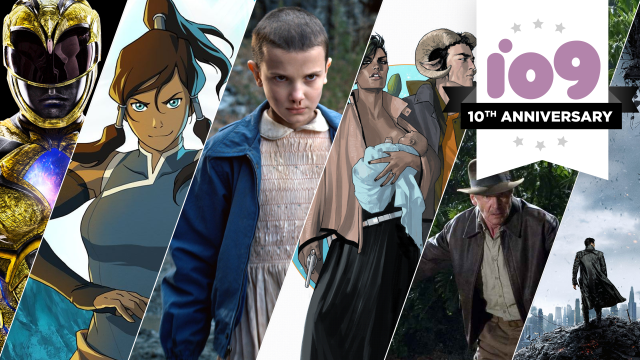We are examining all the things that have had the most impact on pop culture since January 2008. Today, we’re counting down from 60 to 41 – check out 100-61 below!
[referenced url=”https://gizmodo.com.au/2018/01/the-100-biggest-most-important-pop-culture-moments-of-the-last-10-years-81-100/” thumb=”https://gizmodo.com.au/wp-content/uploads/2018/01/pop-culture-moments-410×231.jpg” title=”The 100 Biggest, Most Important Pop Culture Moments Of The Last 10 Years: #81-100″ excerpt=”If you’re a nerd, the last 10 years have been astonishing. Over the last decade, nerds have conquered pop culture. Superheroes dominate theatres and TV networks. We get a new Star Wars movie every year. A show with zombies, dragons and people having graphic sex is mainstream. It’s been 10 years of victories, losses, good times, bad decisions, things we thought we’d never see, things we never could’ve imagined – and frankly, it’s time to take stock.”]
[referenced url=”https://gizmodo.com.au/2018/01/the-100-most-important-pop-culture-moments-of-the-last-10-years-61-80/” thumb=”https://gizmodo.com.au/wp-content/uploads/2018/01/topmoments2-410×231.jpg” title=”The 100 Most Important Pop Culture Moments Of The Last 10 Years: #61-80″ excerpt=”We are looking back at the most important things that have happened, decisions that were made, and the moments, both good and bad, that have led us from January 2008 to now. Today, we’re counting down from 80 to 61.”]
60) After 52 years, X-Men hero Iceman comes out of the closet
After making his debut in the very first issue of X-Men in 1963, Bobby Drake spent decades bailing out of countless relationships with all manner of women in Marvel’s books. In 2012, a teenaged version of Bobby found himself pulled forward through time into the Marvel universe’s present, meeting the older version of himself. A chance meeting with the equally time-displaced teenage Jean Grey led to her learning that Bobby had always harboured romantic feelings for Angel, and this put Bobby on the path of discovery and self-acceptance that’s carried on in the lives of both his younger and older selves. In coming out as gay in 2015, Iceman not only diversified the original core team of Xavier’s X-Men, he opened up the possibility for Marvel to tell a poignant story about coming into one’s queer identity later in life – a common experience that isn’t really talked about all that much in comics.
59) Hugo Awards vs. Sad Puppies
The Gamergate-inspired backlash against diversity spread to speculative fiction in 2015, when the Hugo Awards were bombarded with conservative nominees – thanks to two groups called the Sad and Rabid Puppies. They believed the awards were unfairly biased against white men and focused on books with leftist agendas, so they sought to overwhelm the nominations with their own picks. The Sad Puppies created a slate of conservative-minded works for people to read, but Castalia House publisher Theodore Beale took it a step further by telling his Rabid followers to vote en masse for those books to be nominated. Ultimately, though, voters largely rejected nominees that came from the Puppies – the 2015 awards saw “No Award” given out in all categories where only Puppies’ options had made it onto the list. In 2016, only a handful of the Puppies’ nominees won anything – plus, Beale’s choice to get porn writer Chuck Tingle on the ballot backfired, as Tingle used his nomination to ruthlessly troll Beale and his movement. WorldCon has since changed the rules for the nomination process, which has lessened the impact of Puppy-style ballot box stuffing.
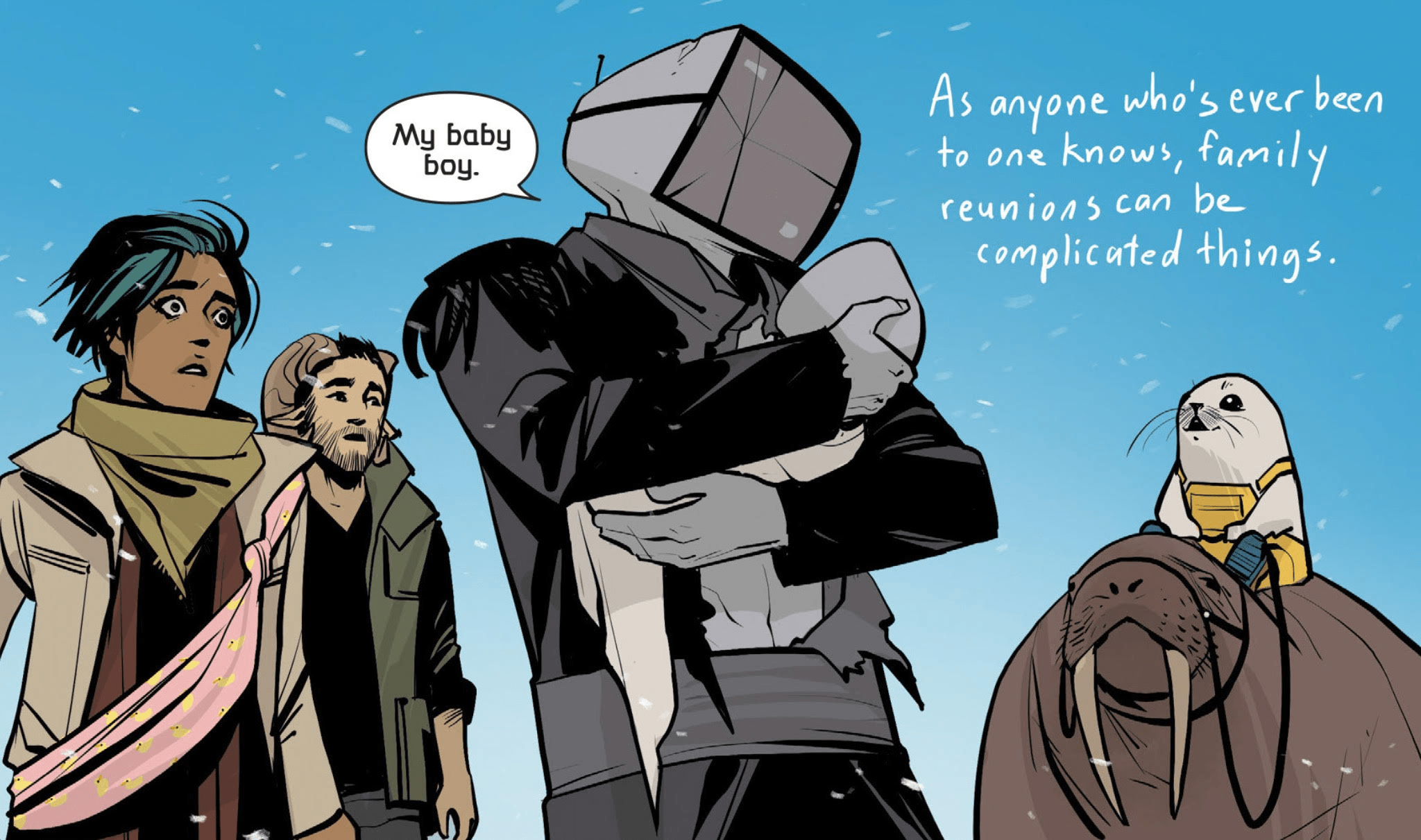
Art by Fiona Staples. Image: Image Comics.
58) The Saga saga begins
A story of star-crossed lovers who go on the run after having a cross-cultural baby may sound like something you’ve heard before, but Saga is so much more than that. The Brian K. Vaughan-Fiona Staples series won legions of fans when it first debuted in 2012, weaving together psychologically well-rendered characters, killer dialogue and space opera melodrama with cutting insights on the human condition. In an era where might-makes-right superheroes dominate so much of the cultural landscape, Saga tackles the futility and brutality of war; the human cost of racism, sexism and xenophobia; and the messy reality of family, all while remaining the most enjoyably readable comic on the market. Plus, it gave the world Lying Cat. What more could you possibly want?
57) Indiana Jones went into a refrigerator and was hit by a nuclear bomb but ended up OK
Depending on who you ask, the fourth Indiana Jones movie was either a not-great entry into the beloved franchise or a humongous slap in the face of a fandom who’d loved the rakish, tomb-raiding university professor for decades. Kingdom of the Crystal Skull wasn’t just a polarising film when it came out in 2008, it was one of the first films of the millennium that worked fans into the sorts of divisive fits usually only reserved for arguments about politics, religion or Star Wars. The debates that came out of Crystal Skull might not have been the most substantive, but they certainly taught everyone what to expect from die-hard fans the next time a beloved movie series was updated for a younger, more modern audience… especially if it involves Shia LaBeouf swinging on vines with a bunch of monkeys.
56) Ridley Scott returns to the Alien franchise
Put aside your (probably negative) feelings about Prometheus and Alien: Covenant for half a second, and instead transport yourself back to 2009, and the moment you heard that master director Ridley Scott – fresh off his gritty take on Robin Hood – would be returning to the sci-fi-horror series that made him a superstar. Who wouldn’t want more Alien from the guy who birthed the franchise, especially after those so-so sequels that came after James Cameron’s excellent Aliens? Little did we know that Scott’s two prequels would be great-looking yet ultimately pretentious films that were way too interested in explaining a backstory that didn’t particularly need telling more than anything else.

Image: Nickelodeon.
55) The Legend of Korra‘s startling finale revelation
When The Last Airbender sequel series premiered on Nickelodeon in 2012, it was unafraid to explore things that kids’ cartoons tend to avoid. Major characters died. Bad guys sometimes won. Relationships ended messily and realistically. A nervous Nickelodeon took the show off the air midway through season three and put the remaining episodes online. But creators Brian Konietzko and Michael Dante DiMartino had another surprise left. Although the title character was excellent at being an Avatar, much of Korra focused on how she struggled with her interpersonal relationships and ability to be forthright with herself. In the final season, Korra reconnects to the Avatar state by reaching her own centre and finding her real sense of self. This also allowed her to find love – not with any of the male leads, but with her friend Asami. While their relationship wasn’t explicitly made clear (although the creators quickly confirmed it), it was unquestionably a major step forward in kids’ programming, and a powerful message of acceptance for those who grow up watching it.
54) The legal fight between CBS and the Star Trek fan film Axanar comes to a very strange end
Axanar, a lavish fan film aiming to offer a documentary-style look at the legendary career of early Starfleet captain Garth of Izar, attracted a lot of attention from Star Trek fans. An engrossing preview boasted great effects and an excellent cast, and successful crowdfunding campaigns raised over a million dollars. Then seemingly out of nowhere, CBS ordered Axanar shut down, despite alleged previous assurances to its director that the fan film would escape legal troubles. From there, things got even more confusing: Axanar‘s production team tried to fight back in court, only for CBS’s lawyers to push back even harder. J.J. Abrams, seemingly at random, declared to an audience at a fan event that the legal case against Axanar was going away, only for that to never happen. Instead, CBS announced official, mandatory guidelines for all future Star Trek fan films that were complex and incredibly restrictive. Two years after it all began, CBS and Axanar finally settled their dispute in January of 2017, resulting in a radically cut-down version of the film – which has yet to be released – following CBS’s rules. A potentially disconcerting precedent for other properties and their relationship with fan-made material was set.
53) Brian Michael Bendis leaves Marvel for DC
For nearly two decades, Brian Michael Bendis was one of the biggest and most important writers at Marvel Comics. He helped usher in important parts of the Ultimate Marvel Universe, including the shocking death of the Ultimate Spider-Man and the ascension of a new character, Miles Morales (co-created with artist Sara Pichelli) to the mantle. Alongside Michael Gaydos, Bendis brought traumatised superhero-turned-private-eye Jessica Jones to life for Alias. With famous runs on everything from Iron Man to the Avengers, to blockbuster events such as Civil War II, Bendis was one of the most prolific writers at the publisher. And then, suddenly, in November 2017, he not only announced his departure from the company, but an exclusive writing deal with DC Comics. Details are still sparse about just what Bendis will be writing at DC, but as he prepares to say farewell to the characters he created and series he shepherded, his absence will leave a huge hole at Marvel – not just in its current output, but for some of its most important characters going forward.
52) Fantastic Beasts and Where to Find Them becomes Harry Potter 2.0
Harry Potter fans were sad to see J.K. Rowling finally wrap up her magical series on the big screen, but when it was announced she’d be turning her 2001 book Fantastic Beasts and Where to Find Them into a film, they were left scratching their heads. Authored by the fictional Newt Scamander, Fantastic Beasts is a textbook-style tome, describing various creatures from the wizarding world. But that didn’t stop Rowling from penning her first screenplay, opening up her imagination once more and giving us a closer look at the struggles of wizards and witches in 1920s New York City. Though the story is set decades before Harry was born, Rowling ensured fans would flock to theatres by including familiar character names and plot lines, as well as crafting new characters we wanted to learn more about. Warner Bros. first announced the film as part of a trilogy, but eventually took an even larger leap of faith and announced it would be a five-film franchise. The world of Harry Potter is going stick around for several more years… and we bet Harry Potter 3.0 won’t be too far behind.
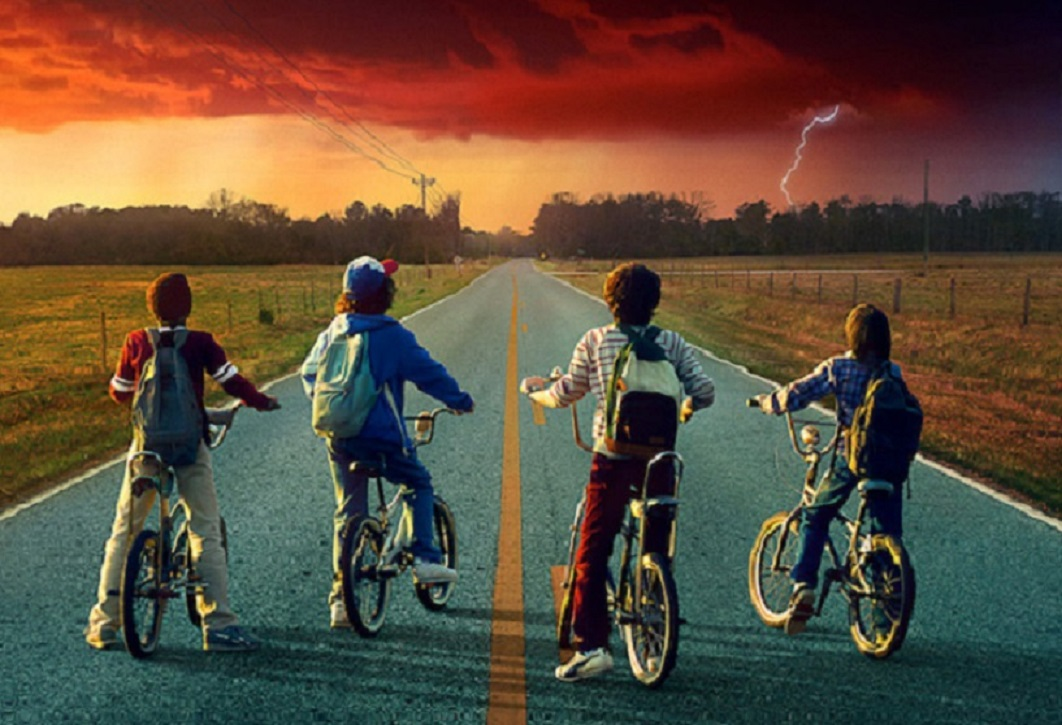
Image: Netflix.
51) Stranger Things harnesses the power of pure nostalgia
In 2016, Netflix and brothers Matt and Ross Duffer introduced us to a very familiar 1980s landscape – with a bonus supernatural underbelly. It didn’t hurt that they gave a real star of the ’80s, Winona Ryder, a lead role, or that they perfectly cast a group of lovable and talented young actors to support her. With mysterious disappearances, a supremely sinister scientist, and four highly unsupervised kids trying to save their town, Stranger Things paid homage to the ’80s films that inspired it, but also somehow felt like it was authentically made alongside them. The series’ influence is already starting to be felt – it’s amazing how many synthesizers are suddenly being used in the scores of nerd shows nowadays – and we’ll be seeing it for a long, long time.
50) Sony desperately reboots Spider-Man twice in the same decade
In 2012 and 2017, Sony set the reboot speed record twice. In 2012, just five years after the release of Sam Raimi’s Spider-Man 3, Sony recast Spider-Man for a new film, The Amazing Spider-Man. The aim was to kick off a whole new Spider-Man shared universe, but it was released so soon after the Raimi series that fans didn’t embrace the new version like the studio expected. The 2014 sequel also failed to capture fans. So what did Marvel do? Two years later, it rebooted Spidey again. We’ve already talked about Sony’s monumental choice to share Spider-Man with Marvel in the previous list, but this is a different, weirder side to that decision. Sony was so desperate to make the perfect Spider-Man movie franchise that it took the unprecedented step of rebooting it two times within 10 years. And it isn’t that Spider-Man 3 or The Amazing Spider-Man flicks were bombs – they all made plenty of money – but they didn’t make as much money as Sony knew a Spidey franchise done correctly could make. So ignoring audience fatigue, brand confusion and common sense, they started over. Twice. There’s no more amazing or spectacular proof of superheroes’ cinematic dominance than that.
49) The Star Trek reboot movie rejuvenates the franchise
Over the decades, many major franchises experience a cultural downtime. But for a long while, it seemed Star Trek was immune. Since debuting in the ’60s, there was almost always a new movie or series out for fans to enjoy. But between the decline of the Next Generation-based movies, especially 2002’s execrable Nemesis, and Enterprise limping to a mostly unwatched finish on TV in 2005, it somehow felt like decades had passed between Star Trek‘s heyday and the announcement that J.J. Abrams would not only bring the franchise back to theatres in 2009, but was recasting the entire crew of the original Enterprise. It was controversial among fans, but it worked. The movie was a success, inspiring two sequels, but most importantly, it introduced new fans to the franchise and made people interested in Trek again. Without the reboot, we wouldn’t have Discovery – or any other Star Trek the future holds. Which, apparently, includes a movie by Quentin Tarantino.
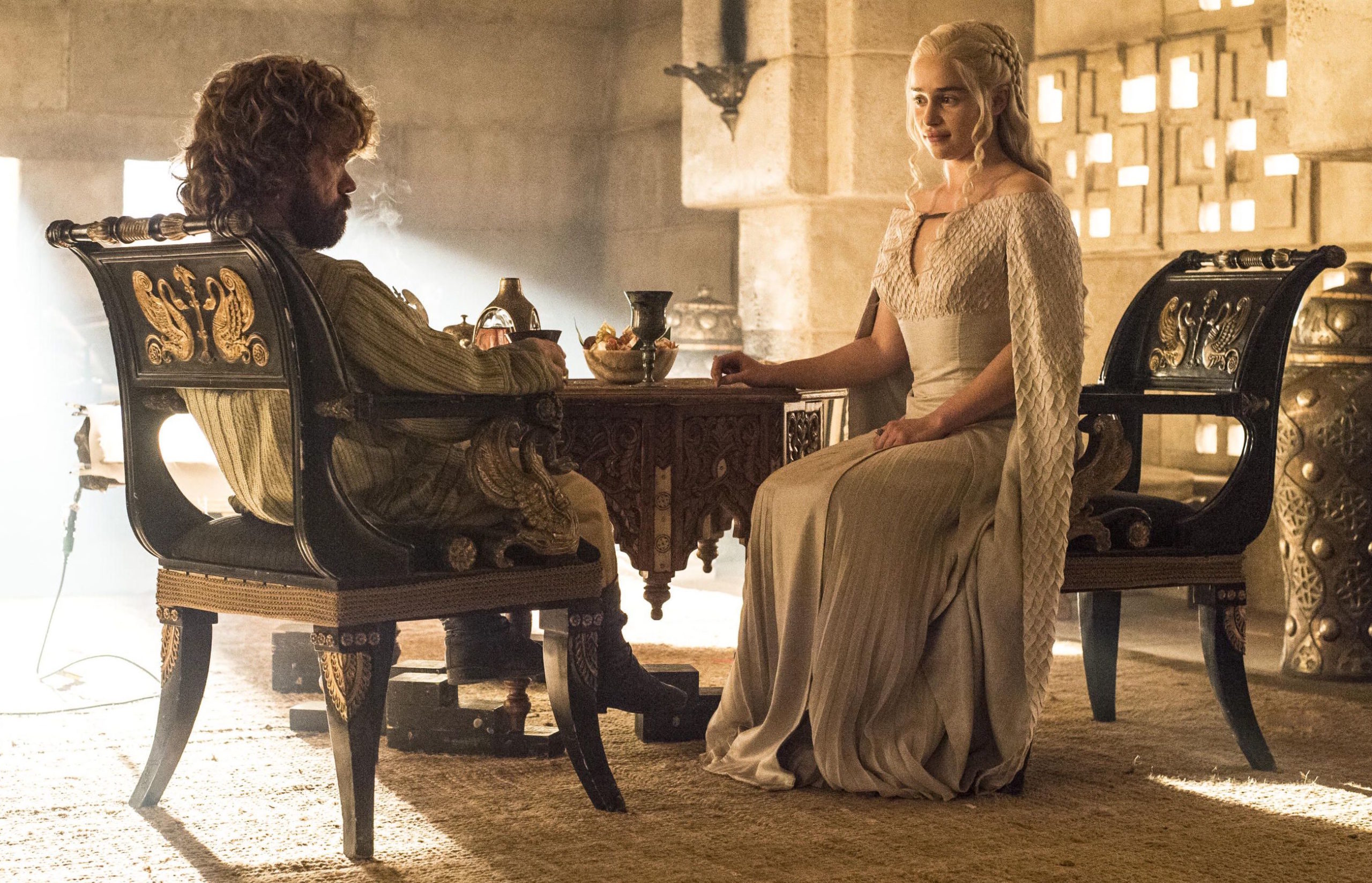
48) Game of Thrones leaves George R.R. Martin’s books behind
Three months after Game of Thrones premiered in 2011, George R.R. Martin published A Dance with Dragons, the fifth book in his A Song of Ice and Fire series. And for a while, it never occurred to anyone what would happen if the HBO show caught up to Martin’s books. As time went on, though, it became increasingly clear that the show couldn’t wait on Martin, especially as the show slowed down various storylines to maximise its source material. Because of that, Game of Thrones essentially surpassed different parts of the books at different times, making it hard to nail down a specific moment where it moved on. But the scene where Tyrion meets Daenerys, the first time two of the series’ three leads had ever met each other in person – something that still hasn’t occurred in the books – is as good as any. Game of Thrones has used its freedom in some fantastic, and also terrible, ways, but no matter how the show ends it will live or die by its own sword now.
47) Power Rangers becomes the first superhero blockbuster to feature an LGBTQ main character… barely
LGBTQ representation in superhero movies made a major stride – its first stride, really – in 2017, but not due to the efforts of either the DC or Marvel cinematic behemoths. Lionsgate released the first big-time superhero movie to include an LGBTQ lead in Power Rangers, having previously announced that the Yellow Ranger, Trini (played by Becky G), would be portrayed as such. But when it came out, the film was vague at best when dealing with Trini’s sexual identity, leaving its attempts to portray her as a queer character so hazy and so briefly examined that most would have never noticed it if the studio hadn’t loudly congratulated itself. Alas, while Power Rangers might claim first on a technicality, the superhero movie genre that’s dominating Hollywood is still waiting for some LGBTQ representation to arrive.

Image: Nickelodeon/Paramount.
46) The Last Airbender brings “whitewashing” to the forefront
Avatar: The Last Airbender is one of the greatest animated shows of all time, so we were thrilled when it was announced that Nickelodeon was making a live-action adaptation. Unfortunately, the movie was worse than anyone could have imagined. The writing was terrible, the acting was wooden, and the bending effects were laughable at best. It stripped out all the best elements of Avatar, especially (and most unfortunately) its diversity. As portrayed in the cartoon, the main character Aang comes from a Southeast Asian-inspired culture; his friends Katara and Sokka are part of an Inuit-esque tribe; and the antagonist, Zuko, hails from the Fire Nation, with primarily Japanese influences. But on the big screen, all four roles were cast with white leads. Only Zuko changed, after Jesse McCartney dropped out and was replaced by Dev Patel… which had the unfortunate effect of darkening the skin tone of the entirety of the villainous Fire Nation. The movie failed spectacularly, but its one success was making sure everyone knew what “whitewashing” is – a problem that still persists today.
45) Ken Liu’s ‘Paper Menagerie’ becomes the first story to win a Hugo, Nebula and the Word Fantasy Award
In an unprecedented trifecta for any work of fiction, Ken Liu’s 2011 short fantasy story “Paper Menagerie” picked up every single major award for the genre: The Hugo, the Nebula and the World Fantasy Award. He later went on to win a Hugo for another short story, “Mono no aware”, and his translation of Liu Cixin’s The Three Body Problem won the 2015 Hugo for Best Novel, a first for a translated work. His own ongoing novel series, the Dandelion Dynasty, has also been critically acclaimed. But the wonderful “Paper Menagerie” is still so worthy of all its accolades.
44) Marvel brings its Cinematic Universe to TV with Agents of SHIELD
When Iron Man rocketed to blockbuster success in 2008, it was clear Marvel was on its way to becoming a major player in the movie industry. Given that TV and movies are two different mediums with their own infrastructures, success on the small screen wasn’t guaranteed. Marvel making Clark Gregg’s Agent Coulson the central character of their 2013 Agents of SHIELD show connected the studio’s TV offerings to its popular movie universe, and its positive reception later paved the way for Netflix to carve out its own darker and more intense corner of the MCU. Even if it seems unlikely we’ll see the movie and TV heroes together on-screen in the future, the expansion has extended the company’s characters from outer space to the gritty streets of Manhattan, making it seem like a sprawling space full of possibility, just like in the comics.
43) Twilight expands fandom in huge, huge ways
Vampire stories have been done to death and back. It seemed like there wasn’t much left of the genre to surprise us, until Stephenie Meyer came along and made them sparkle. The series and subsequent film adaptations (which began in 2008) have been the subject of much ridicule, but the author tapped into something monumental in her dramatic telling of teenager Bella’s love affair with vampire Edward. By the time the fourth book was published Hollywood was already hard at work cashing in on the previously under-served demographic the YA series served so well – teenage girls. Casting up-and-coming actors Kristen Stewart and Robert Pattinson in the lead roles helped fuel a never-before-seen level of fandom fever. Fans of Twilight, who may have previously been in the dark about what genre fiction had to offer, quickly expanded their purview to consume what many of us traditionally included in “fandom”, and helped bring our most treasured geek art to a massive new audience.
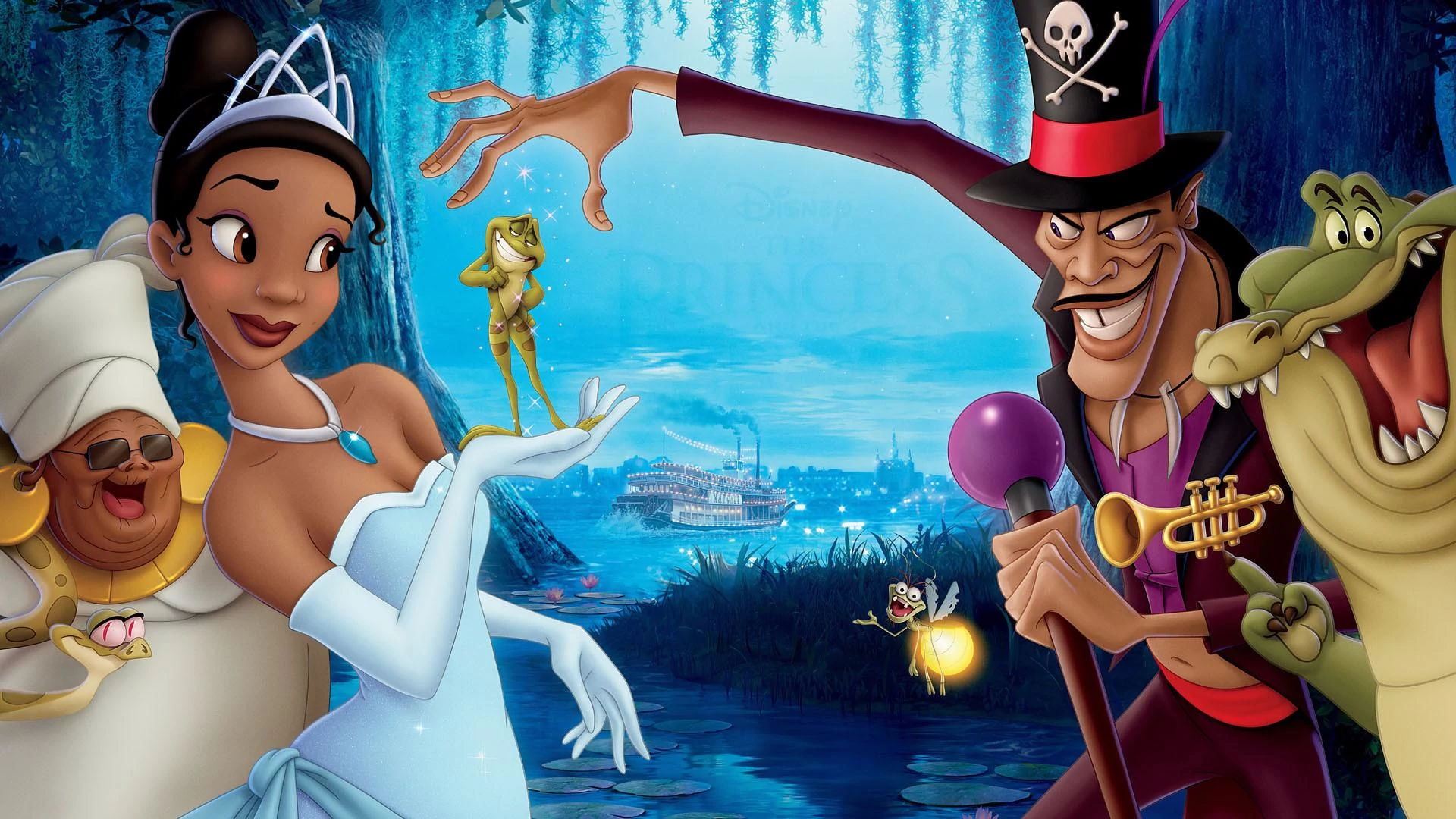
42) The Princess and the Frog introduces the first black Disney princess
For decades, little black girls who loved Disney’s stable of princess characters didn’t have much hope for seeing a character who looked like them. That all changed when The Princess and the Frog hit theatres in 2009. Princess Tiana’s confident personality signalled a shift from other princess characters, and her adventures gave audiences a tour through the vibrant Bayou culture of New Orleans. Most importantly, Tiana gave parents who’d never seen themselves represented in a lush Disney production hope that their kids wouldn’t have to wait as long.
41) The Khan debacle of Star Trek Into Darkness
Damn, does J.J. Abrams like to play it coy. While it’s always nice to be truly surprised by a movie, keeping secrets – what Abrams refers to as his “mystery box” – can backfire. When Benedict Cumberbatch was first cast in Star Trek Into Darkness as the villain, we were told he was going to be playing a classic Trek character. We knew it was Khan. We were told he wasn’t playing Khan, but rather a character named John Harrison. The world responded by stating that John Harrison was, in fact, not a classic Trek character, and asked if they wanted to try again, but the production insisted he wasn’t Khan. For months they denied Cumberbatch was playing a new (not to mention white and British) version of the genetically enhanced Indian warlord, but we all knew. So when “John Harrison” told Kirk his real name during the movie, it wasn’t a shock but indisputable proof that fans had not only been flat-out lied to, but treated like we were idiots.
